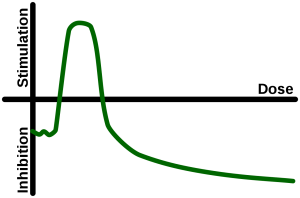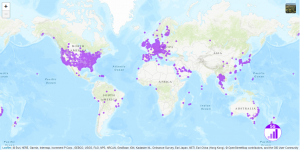Evolutionary developmental biology (informally, evo-devo) is a field of biological research that compares the developmental processes of different organisms to infer the ancestral relationships between them and how developmental processes evolved.
The field grew from 19th-century beginnings, where embryology faced a mystery: zoologists did not know how embryonic development was controlled at the molecular level. Charles Darwin noted that having similar embryos implied common ancestry, but little progress was made until the 1970s. Then, recombinant DNA technology at last brought embryology together with molecular genetics. A key early discovery was of homeotic genes that regulate development in a wide range of eukaryotes.
The field is characterised by some key concepts, which took evolutionary biologists by surprise. One is deep homology, the finding that dissimilar organs such as the eyes of insects, vertebrates and cephalopod molluscs, long thought to have evolved separately, are controlled by similar genes such as pax-6, from the evo-devo gene toolkit. These genes are ancient, being highly conserved among phyla; they generate the patterns in time and space which shape the embryo, and ultimately form the body plan of the organism. Another is that species do not differ much in their structural genes, such as those coding for enzymes; what does differ is the way that gene expression is regulated by the toolkit genes. These genes are reused, unchanged, many times in different parts of the embryo and at different stages of development, forming a complex cascade of control, switching other regulatory genes as well as structural genes on and off in a precise pattern. This multiple pleiotropic reuse explains why these genes are highly conserved, as any change would have many adverse consequences which natural selection would oppose.
New morphological features and ultimately new species are produced by variations in the toolkit, either when genes are expressed in a new pattern, or when toolkit genes acquire additional functions. Another possibility is the Neo-Lamarckian theory that epigenetic changes are later consolidated at gene level, something that may have been important early in the history of multicellular life.


![The next million years by Charles Galton Darwin iu[3]](https://cognitive-liberty.online/wp-content/uploads/iu3-225x300.jpg)

![Habituation & moral apathy ea32b00b28f5043ecd0b4401ef444f94eb6ae3d01cb5134890f6c870_640[1]](https://cognitive-liberty.online/wp-content/uploads/ea32b00b28f5043ecd0b4401ef444f94eb6ae3d01cb5134890f6c870_6401-300x170.jpg)

![Darwin-Huxley-Garlton-Wedgewood ‘s genealogy 1061-pedigree-of-galton-darwin-wedgwood-family-3rd-international-eugenics-conference[1]](https://cognitive-liberty.online/wp-content/uploads/1061-pedigree-of-galton-darwin-wedgwood-family-3rd-international-eugenics-conference1-300x241.jpg)
